Comparative analysis of POD gene family and expression differentiation under NaCl, H2O2 and PEG stresses in sorghum
- PMID: 40676507
- PMCID: PMC12273028
- DOI: 10.1186/s12864-025-11858-6
Comparative analysis of POD gene family and expression differentiation under NaCl, H2O2 and PEG stresses in sorghum
Abstract
Background: Sorghum has a strong tolerance to multi-abiotic stresses such as drought, heat, poor soil fertility, and salinity, yet its growth and development are significantly affected by extreme abiotic stresses, ultimately reducing grain yield. Peroxidase (POD) proteins, which are members of the oxidoreductase enzyme family, play an important role in protecting plants against multi-abiotic stress. However, this gene family has rarely been studied in sorghum.
Results: In this study, 114 POD gene members (SbPODs) were identified in sorghum and distributed unevenly throughout 10 chromosomes. Phylogenetic analysis clustered these genes into 12 subgroups. Gene structure and motif analyses showed the structural and functional diversity among the subgroups. These genes have undergone 16 segmental duplication and 32 tandem duplication events, indicating that both segmental and tandem duplications are major contributors to the expansion of the SbPOD gene family. Most duplicated SbPODs have undergone purifying selection with limited functional divergence during duplication events. Compared with maize, rice, and Arabidopsis, SbPOD gene family not only occurred the duplication on the whole-genome level, but also existed independent duplication events. The qRT-PCR results showed twenty SbPOD genes exhibited differential expression patterns in leaves under NaCl, H2O2 and PEG stress treatments. Of twenty SbPOD genes, most SbPOD genes showed consistently significant downregulation under NaCl, H2O2, and 30% PEG6000 stress treatments, except for SbPOD81 and SbPOD26. Under NaCl stress, the expression level of SbPOD81 showed a down-up regulation trend. Under H2O2 stress, the expression level of SbPOD81 showed a down regulation trend. Under 30% PEG6000 stress, SbPOD81 maintained down-up regulation trend but quite different under NaCl stress. In contrast, the expression level of SbPOD26 showed consistent down-up regulation trend under both NaCl and H2O2 stress, while after 3 h of adaptation under 30% PEG6000 stress, the expression level of SbPOD26 continued to increase. The analysis of cis-elements and conserved domain showed that SbPOD81 contains one W-box, four MYB, and three MYC cis-elements, while SbPOD26 has two W-boxes, four MBS, four MYB, and eight MYC cis-elements. Additionally, SbPOD26 possesses one PAT1 domain, which is absent in SbPOD81 and other SbPOD genes. This structural distinction not only would explain the observed expression divergence but suggests SbPOD26 may perform specialized biological functions distinct from other SbPOD genes.
Conclusions: Totally, 114 POD gene members were identified in sorghum by a series of bioinformatics analysis. The expression patterns of some members of SbPOD gene family exhibited significantly difference under various stress conditions. These findings not only provide valuable insights into the evolutionary dynamics of the SbPOD gene family, but also lay a foundation for further studies on the functions of POD genes.
Keywords: SbPOD candidate genes; Abiotic stress; Expression pattern; Peroxidases; Sorghum.
© 2025. The Author(s).
Conflict of interest statement
Declarations. Ethics approval and consent to participate: All the seeds used for planting materials during the experiment were provided by our team and all the procedures were performed in accordance with international guidelines. Consent for publication: Not applicable. Competing interests: The authors declare no competing interests.
Figures
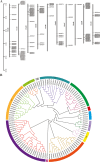


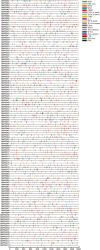
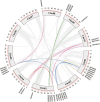


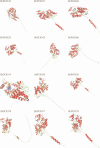
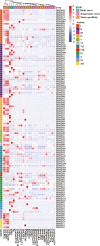
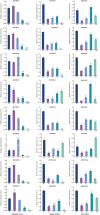
Similar articles
-
Genome-Wide Identification and Expression Analysis of the Class III Peroxidase Gene Family under Abiotic Stresses in Litchi (Litchi chinensis Sonn.).Int J Mol Sci. 2024 May 26;25(11):5804. doi: 10.3390/ijms25115804. Int J Mol Sci. 2024. PMID: 38891992 Free PMC article.
-
Genome identification of NAC gene family and its gene expression patterns in responding to salt and drought stresses in Rhododendron delavayi.BMC Plant Biol. 2025 Jul 17;25(1):924. doi: 10.1186/s12870-025-06965-1. BMC Plant Biol. 2025. PMID: 40676511 Free PMC article.
-
Genome-wide identification and analysis of the FLA gene family in maize (Zea mays L.) and its expression in response to abiotic stresses.BMC Plant Biol. 2025 Jul 30;25(1):982. doi: 10.1186/s12870-025-06981-1. BMC Plant Biol. 2025. PMID: 40739182 Free PMC article.
-
The Black Book of Psychotropic Dosing and Monitoring.Psychopharmacol Bull. 2024 Jul 8;54(3):8-59. Psychopharmacol Bull. 2024. PMID: 38993656 Free PMC article. Review.
-
Systemic pharmacological treatments for chronic plaque psoriasis: a network meta-analysis.Cochrane Database Syst Rev. 2021 Apr 19;4(4):CD011535. doi: 10.1002/14651858.CD011535.pub4. Cochrane Database Syst Rev. 2021. Update in: Cochrane Database Syst Rev. 2022 May 23;5:CD011535. doi: 10.1002/14651858.CD011535.pub5. PMID: 33871055 Free PMC article. Updated.
References
-
- Nagaraju M, Reddy PS, Kumar SA, Kumar A, Rajasheker G, Rao DM, Kavi Kishor PB. Genome-wide identification and transcriptional profiling of small heat shock protein gene family under diverse abiotic stress conditions in Sorghum bicolor (L). Int J Biol Macromol. 2020. 10.1016/j.ijbiomac.2019.10.023. - PubMed
-
- Pennisi E. Plant genetics. How sorghum withstands heat and drought. Science. 2009. 10.1126/science.323.5914.573. - PubMed
-
- Mickelbart MV, Hasegawa PM, Bailey-Serres J. Genetic mechanisms of abiotic stress tolerance that translate to crop yield stability. Nat Rev Genet. 2015. 10.1038/nrg3901. - PubMed
-
- Rosenzweig C, Elliott J, Deryng D, Ruane AC, Müller C, Arneth A, Boote KJ, Folberth C, Glotter M, Khabarov N, et al. Assessing agricultural risks of climate change in the 21st century in a global gridded crop model intercomparison. Proc Natl Acad Sci U S A. 2014. 10.1073/pnas.1222463110. - PMC - PubMed
-
- Pryor SC, Barthelmie RJ, Schoof JT. High-resolution projections of climate-related risks for the Midwestern USA. Climate Res. 2013. 10.3354/cr01143.
Publication types
MeSH terms
Substances
Grants and funding
- 32172036/National Natural Science Foundation of China
- 32172036/National Natural Science Foundation of China
- 32172036/National Natural Science Foundation of China
- 32172036/National Natural Science Foundation of China
- 32172036/National Natural Science Foundation of China
- 32172036/National Natural Science Foundation of China
- 2021C02064-6/Zhejiang Major Scientific and Technological Project of Agricultural (Upland crop) Breeding
- 2021C02064-6/Zhejiang Major Scientific and Technological Project of Agricultural (Upland crop) Breeding
- 2021C02064-6/Zhejiang Major Scientific and Technological Project of Agricultural (Upland crop) Breeding
- 2022E10012/Zhejiang Key Laboratory of Digital Dry Land Crops
- 2022E10012/Zhejiang Key Laboratory of Digital Dry Land Crops
- 2022E10012/Zhejiang Key Laboratory of Digital Dry Land Crops
- 2018YFD1000706/2018YFD10007011/National Key R&D Program of China
- 2018YFD1000706/2018YFD10007011/National Key R&D Program of China
- 2018YFD1000706/2018YFD10007011/National Key R&D Program of China
- 2018YFD1000706/2018YFD10007011/National Key R&D Program of China
LinkOut - more resources
Full Text Sources

